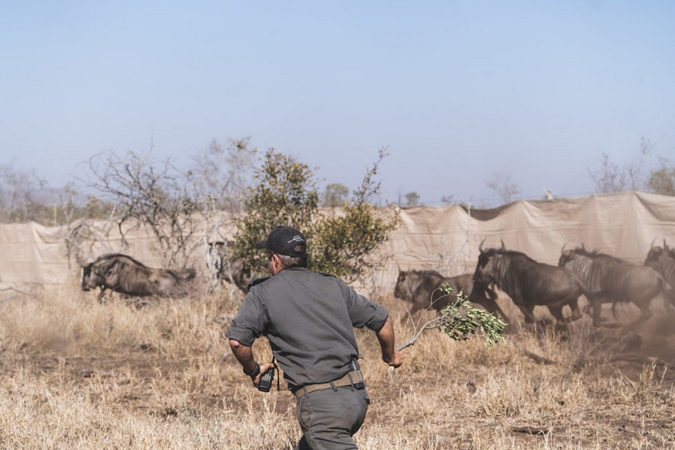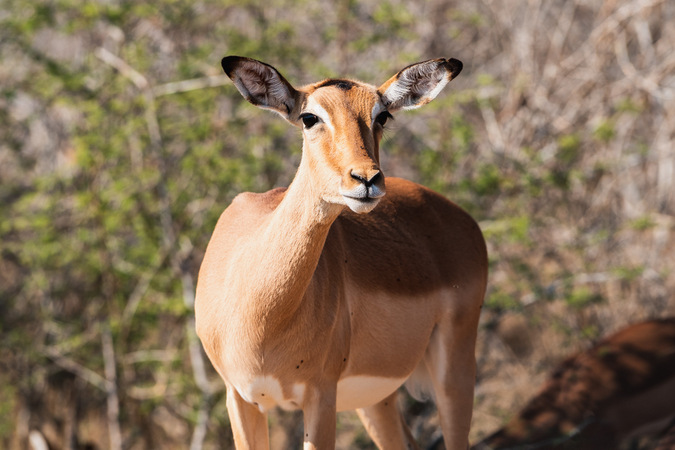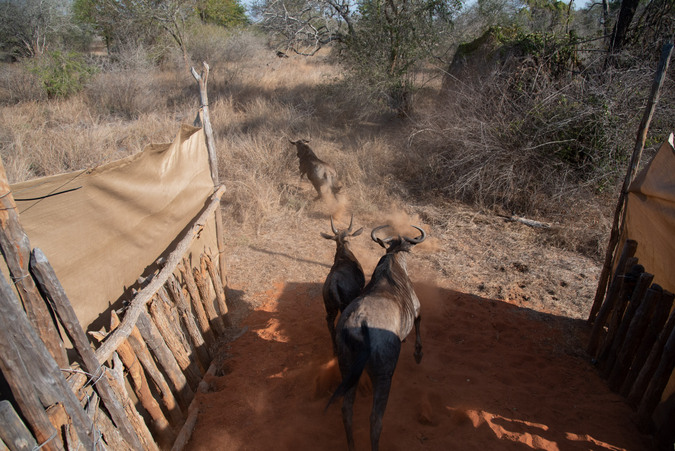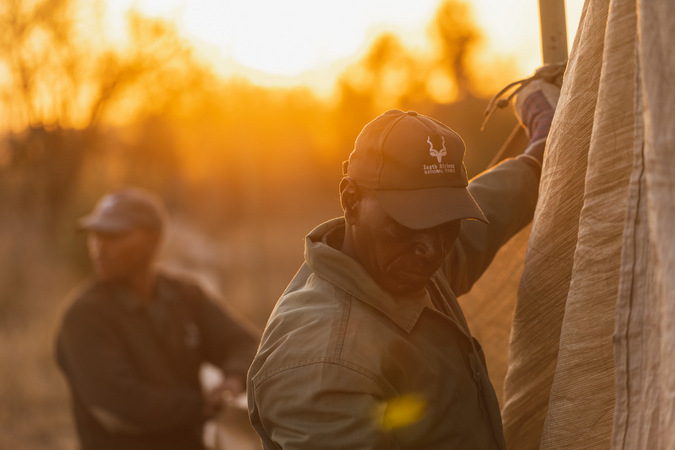
The past two months saw the translocation of zebra, blue wildebeest and impala from Kruger National Park in South Africa to Zinave National Park in Mozambique. The animals were donated by South Africa’s Department of Environmental Affairs (DEA) to Mozambique’s Ministry of Land, Environment and Rural Development (MITADER) in a collaborative effort between the governments to further develop key wildlife areas as part of the Great Limpopo Transfrontier Conservation Area, spanning Mozambique, South Africa and Zimbabwe.
“In protecting key natural resources one can no longer have a fortress conservation mentality, and the Great Limpopo Transfrontier treaty is leading the way towards the formulation of a new conservation management plan for Kruger National Park that looks beyond our borders. If we can share our surplus wildlife with our neighbours, and in so doing eventually share our 1.9 million annual visitors into Mozambique, it will not only benefit the people of Mozambique, but contribute to a balanced and sustainable ecotourism system for the whole region”, stated Glenn Philips, Managing Executive, Kruger National Park.

Currently, the animal populations in the Kruger National Park are doing extremely well and the animal numbers of certain species are in sufficient enough numbers that it can be removed from the park without causing any adverse ecological impacts – a testimony to the successful conservation management strategies of South African National Parks (SANParks).

On the other side of the border, the 408,000 ha Zinave National Park is still recovering from a civil war that left it almost devoid of wildlife. In 2016, Mozambique’s National Administration of Conservation Areas (ANAC) and Peace Parks Foundation signed a co-management agreement with the objective to restore the park to its former glory. The agreement sets out a framework whereby the partner organisations agreed on a strategy to rehabilitate and rewild Zinave by investing in anti-poaching, infrastructure development, tourism development and community development interventions.
The end goal will be to attract tourism back to the park that will generate sufficient revenues to sustain the operations of park management – thereby conserving nature for the benefit of people and animals alike.

Through the support received from DEA and SANParks, a total of 291 impala, 153 wildebeest and 85 zebra were moved from Kruger National Park into Zinave this year, with Peace Parks Foundation funding the translocation costs. The overall goal is to reintroduce 7,500 game animals in Zinave over the next five years and to date over 1,300 animals have been rewilded to the Park.
Director General for ANAC, Mr Mateus Mutemba, shared: “Mozambique would like to extend its gratitude to South Africa for its continued support in rewilding Zinave. Gorongosa National Park, in central Mozambique, is a living testimony of how nature is resilient and animal populations can thrive after being nearly depleted. In Gorongosa we saw a ten-fold increase in animal numbers within ten years, and the park is now sharing animals with other protected areas. In the same way, we strongly believe that a decade from now, Zinave will play an important role in the biodiversity economy of the Great Limpopo Transfrontier area, being a source of employment, a source of living, for the children of Zinave, and they will take pride in conserving the region’s nature. Well-protected and existing in harmony with man, wildlife populations will thrive, and soon Zinave will be able to also supply wildlife to other areas in the country. Nature has been taking care of human beings since the dawn of time. As long as we continue protecting it and integrate our people in biodiversity economy-related programs alongside conservation education we can succeed.”

The animals are first released into a 18,600 ha fenced sanctuary where they can acclimatise to their new environment. Each animal plays a critical role in keeping the biodiversity of a conservation area healthy and balanced. Through various translocations over the past couple of years, numerous animal herds can now be seen in the area and are doing very well.

“Collaboration such as this is what developing peace parks is all about. It promotes cross-country collaboration, through which nations have the opportunity to work together on projects that directly impact and promote the well-being of their citizens. The rewilding of Zinave National Park is a vital next step in reconnecting traditional wildlife dispersal areas within the Great Limpopo Transfrontier Conservation Area, and eventually reconnecting the Zinave, Banhine and Limpopo National Parks in Mozambique with Kruger National Park in South Africa and Gonarezhou National Park in Zimbabwe -a vast landscape spanning almost 100,000 square kilometres. Wildlife corridors are essential to enable animals to move naturally along ancient migratory routes, strengthening the significance of maintaining healthy ecosystems which is a cornerstone of transboundary conservation efforts,” says Peace Parks Foundation Chief Executive Officer, Werner Myburgh.
Watch Rewilding Africa from Peace Parks Foundation below
To comment on this story: Login (or sign up) to our app here - it's a troll-free safe place 🙂.![]()








